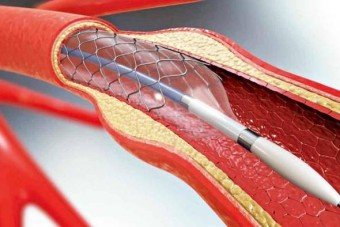
Initially, angioplasty was performed with "zero support", meaning no stents were implanted, resulting in short-lived effects. With advancements in medical technology, resorbable stent is now available, significantly reducing the one-year recurrence rate compared to the "zero support" era. These stents naturally dissolve in the body over time.
Dr. Lo Ka Yip, David, a Resident Consultant in Cardiology at Hong Kong Adventist Hospital - Stubbs Road, explains that angioplasty is primarily recommended for coronary heart disease (CHD) patients with over 70% arterial blockage or over 50% blockage in the main artery. Patients with acute coronary syndrome (ACS) may also require the procedure. During the surgery, doctors insert a catheter with a balloon through a small incision in the thigh or wrist, guiding it to the narrowed artery. The balloon is then inflated to widen the vessel, and a stent is implanted to keep the artery open.
From "Zero Support" to "Vessel Support"
In the early stages of angioplasty, doctors only used balloon dilation without stents, leading to high recurrence rates due to re-narrowing of the artery. To address this, bare-metal stents (BMS) were introduced to provide structural support and reduce post-surgery restenosis. However, Dr. Lo notes that BMS still had drawbacks, such as inflammation-triggered tissue overgrowth, which could cause re-narrowing.
With further advancements, drug-eluting stents (DES) became the standard, as their medicated coating inhibits cell overgrowth, significantly lowering restenosis rates. Modern DES materials have also improved, offering better support while being over 50% thinner than BMS.
Resorbable Stent That Dissolve Naturally
Beyond conventional DES, some patients may opt for magnesium-based resorbable stent. Dr. Lo explains that resorbable stent also feature a drug-eluting coating and naturally dissolve in the body about a year after implantation.
He shares a case of a 40-year-old patient with 90% blockage in the left anterior descending artery. Given his young age and reluctance to have a permanent metal implant, a resorbable stent was used with excellent results. However, Dr. Lo cautions that resorbable stent is still evolving and not suitable for all cases (e.g., severely calcified arteries). Patients should consult their doctors to determine eligibility.
Dr. Lo emphasizes that post-procedure care is just as important as the surgery itself. Patients must take dual antiplatelet therapy (DAPT) to prevent blood clots and reduce recurrence risks.
Final advice from Dr. Lo Ka Yip, David: Angioplasty offers various treatment options, each with its own benefits and limitations. Patients should discuss thoroughly with their cardiologist to choose the most suitable approach for their condition.




















